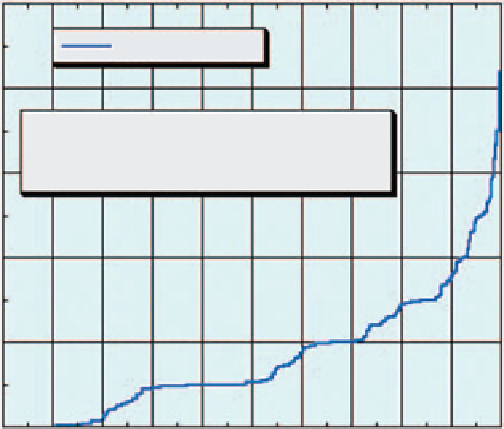Environmental Engineering Reference
In-Depth Information
Distribution of Dvork
Classification Errors (1997-2003)
50
ABS (Dvorak Error)
40
Fifty percent of the Dvorak intensity estimates are
within 5 kt of the best track intensity, 75% are
within 12 kt and 90% are within 18 kt.
30
20
10
0
0
10
20
30
40
50
60
70
80
90
100
Percent
Fig. 10.3
Errors of the Dvorak tropical cyclone intensity estimation technique (From Velden et al.
2006
)
10.2.2
Improved Objective Dvorak Approaches
Following Dvorak's original work, research and development efforts have been
focused on replicating and refining the Dvorak approach with objective and
automated routines using the IR temperatures (Velden et al.
2006
). Automated
Dvorak techniques give reliable results that are quickly updated as the latest IR
satellite image becomes available, and the tropical cyclone intensity data supple-
ment the general use of satellite data for analysis and forecasting.
Initial automated techniques were analogous to the operational Dvorak
technique's enhanced IR (EIR) method (Dvorak
1984
; Zehr
1989
; Velden et al.
1998
). The original goal of using computer-based objective methodology to
achieve the accuracy of the operational Dvorak technique was accomplished,
however, with important limitations. The automated routines could only be applied
to storms at greater than minimal hurricane intensity. Also, a user-located storm
center was needed. With continued research and development, the advanced objec-
tive Dvorak technique (AODT) emerged (Olander et al.
2004
). The most recent
version of the objective algorithm progression is the advanced Dvorak technique
(ADT). Unlike the earlier techniques that attempt to mimic the operational tech-
nique, ADT is focused on revising and extending the method beyond the original
application and constraints. The ADT is fully automated for real-time analysis and

Search WWH ::

Custom Search